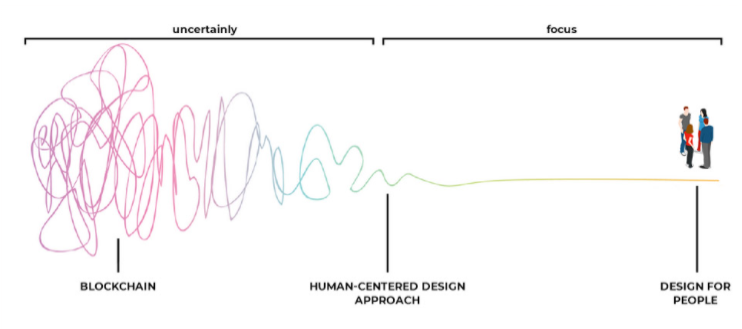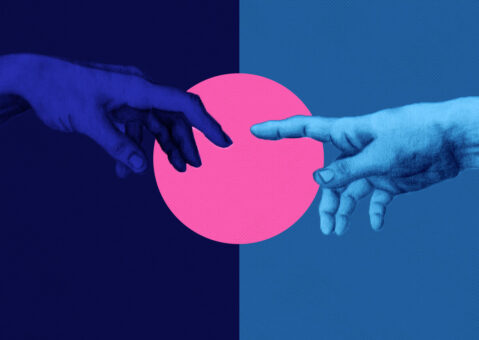If all you have is a hammer, everything looks like a nail.
Abraham Maslow was an American psychologist who was best known for creating some interesting theories about modern life, such as Maslow’s hierarchy of needs. In one of his most important books, The Psychology of Science (1966) this humanistic psychologist noted that “it is tempting to think that, if the only tool you have is a hammer, you can treat anything as if it were a nail“.
Something similar happened with the boom of blockchain. This technology has been widely seen as a tool to transform how people transact, collaborate, or identify themselves. These fundamental characteristics are largely validated from a scientific or technological point of view, but with the euphoria of a new emerging technology that could transform the Internet as we know it, tech crews have started to use it like Maslow’s hammer to nails. Often, we can see examples of solutions:
Unlocking a door using NFT verification 👏 pic.twitter.com/K8BL11USNe
— Blockworks (@Blockworks_) January 15, 2022
That may seem more like a problem, especially if we think that the general public has to use it in a given context, e.g: opening a car in one minute with blockchain instead of 4 seconds with a key.
Doesn't it feel great when you come up with a great hack?#Arianee CTO @gnarco's latest one allows him to lend a friend the digital keys to his new #Tesla, with the #Arianee Wallet.
(Don’t worry, his hack allows him to get them back!)A thread on the tech. elements 👇👇👇(1/9) pic.twitter.com/so4YWPbpTu
— Arianee (@ArianeeProject) May 20, 2020
At P2P Models we like to look at technology with a multidisciplinary approach and question these assertions through different methodologies. One of our missions as a research team is to test blockchain with people who are part of communities. By using the Human-Centered Design (HCD) approach we have extracted several interesting insights that we would like to share.
The Human Challenges

There is limited academic literature analyzing blockchain from a design perspective. HCD is a methodology that places the person at the center of the entire process. This approach is frequently used in innovation contexts, although it is increasingly being considered in development teams. Through the approach with the people in our case studies during different workshops, a number of conceptual questions have arisen that are interesting to highlight:
Token as a concept
Honestly, who of your friends or neighbors in real life knows what a token is in the context of blockchain? Different definitions are quite complex and confusing both grammatically and conceptually. They are not equal to money but they can be described simply as units of value. In addition, these assets interoperate with transactions, which increases confusion. To top it off, NFTs (which certify the origin of certain assets) appear strongly in all mainstream conversations, increasing the suspicion that this amounts to nothing more than a technological smokescreen, provoking defenders and detractors in equal parts.
The defenders see them as the solution to many of the current problems to find profitability in different artistic practices such as music, visual arts, or video games. The detractors consider them, to be another capitalist invention of white lords and beneficiaries of pyramid schemes.
In tech we trust
Blockchain facilitates transactions, consensus, and shared history between actors. Theoretically, this trust is achieved through transparent and immutable procedures. It is about trust in the veracity of a technical process, rather than human trust in any individual or institution. Paradoxically, people still consider technology to be unreliable and prefer processes where we know there are human beings behind them. On the other hand, the poor implementation of cryptographic processes in digital signatures and other types of public services does not help to consolidate trust in tech.
Everything is a transaction
One of Nielsen’s 10 principles for having user friendly interfaces is based on consistency and standards. Although the debate is very broad since, as it is often said, “if you are not paying for the product, you are the product”, people are used to using the Internet as a free service. Having to pay for any simple operation such as clicking on the classic send button supposes a huge barrier to acceptance. Making blockchain invisible to the people who use it should be in the focus of design research.
Gateway Services as Mediators
Interfaces are crucial in any good human-computer interaction, and one would expect them to be part of the natural domain of blockchain products. Existing blockchain research has focused on interactions with cryptocurrency wallets and exchanges. HCD should keep an eye on the development of gateways and platforms that make blockchain technologies more available and useful to end-users.
Federated and Interoperable Data
Currently, there is a huge amount of confusion about what data economy is and how certain platforms get rich trading with our data , but there is no clear and simple discourse that makes it easy for people to understand what the implications of sharing this data are in their daily lives beyond annoying ads. In addition, blockchain proposals have multiple and interoperable identities adding even more confusion. What are the real benefits of enjoying a plurality of identities? On the other hand, with a technology where absolutely everything we do is recorded forever, how do we deal with “the right to be forgotten”, for example? It could be interesting to investigate possible answers to such questions from an HCD perspective.
Moving forward to possible futures
So many blockchain visions remain immature or too conceptual. Blockchain is currently overwhelmingly driven by a mix of engineering, investment, and crypto-anarcho capitalist visions. Many of the examples we currently have are only pilots or proof of concepts. As researchers, we need to work with collective intelligence and start carrying out participative design practices with real people and communities to engage with the UX community and expand the imagination. Perhaps, these participatory practices, design patterns and templates could be generated to unify and create standards of use.
In conclusion, the questions raised in this article could be resolved and many others could be generated, in such a way that the technology ecosystem could be enriched each time from different points of view. Blockchain is a very useful technology that is here to stay and promises to revolutionize the internet, bringing decentralization to the technology ecosystem to fight against big monopolies. But to achieve this promise, we need multidisciplinary teams that bring points of view from different areas and a lot of practice and testing with functional prototypes, beyond academic theoretical frameworks or technological features that are invisible to people.
SHARE
AUTHOR

Elena Martínez
UX Sorceress
[icon name=”linkedin” class=”” unprefixed_class=””] [icon name=”twitter” class=”” unprefixed_class=””]
![]() Authorship is by Elena Martínez, but this content has been made by the whole P2PModels team
Authorship is by Elena Martínez, but this content has been made by the whole P2PModels team ![]()
![]() Images are by Elena Martínez
Images are by Elena Martínez
![]() Copy editing is by Tabitha Whittall
Copy editing is by Tabitha Whittall
![]() Samer Hassan makes everything is posible
Samer Hassan makes everything is posible





